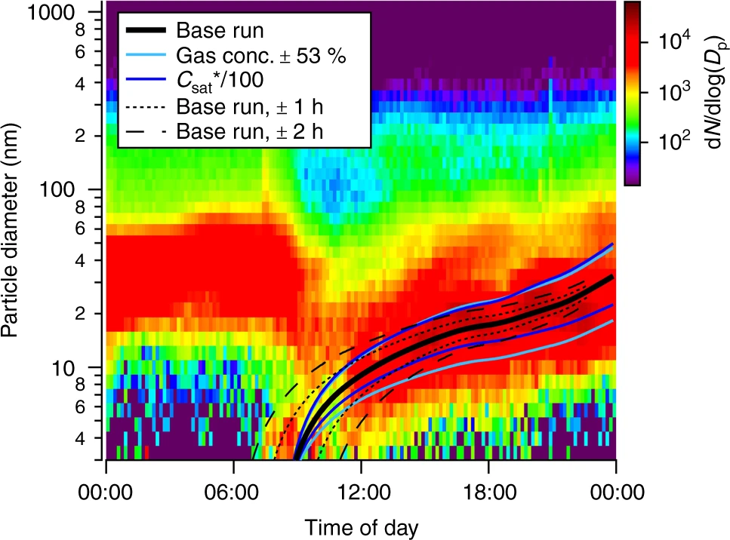Molecular explanation of new particle growth rates
Submitter:
Thornton, Joel — University of Washington
Area of research:
Aerosol Processes
Journal Reference:
Science
The formation and growth of cloud condensation nuclei in the atmosphere (as opposed to direct emission) is estimated to account for up to half of global cloud condensation nuclei that influence cloud optical properties and thus climate. The process requires gas-to-particle conversion of organic vapors, the identity of which has remained largely unknown.
Using novel in situ simultaneous observations of the concentrations and compositions of hundreds of organic vapors in a boreal forest, we were able to quantitatively explain the independently observed growth rates of new particles from 3 nm up to 50 nm during multiple events over the course of six weeks.
Impact
This work provides a significant advance in resolving the long-standing question of what molecules drive the growth of new particles in forested environments. The quantitative explanation of growth rates from a "bottom-up" constraint provides a foundation on which to assess the sources of these key vapors and how they may have changed over time to influence cloud condensation nuclei concentrations. Further, the general agreement suggests that the instrument used to measure the organic vapors, the original development of which was supported by the U.S. Department of Energy through both the Atmospheric System Research and Small Business Innovation Research programs, could be used in other regions to understand sources of secondary organic aerosol during growth events.
Summary
During the DOE Biogenic Aerosol Effects on Clouds and Climate (BAECC) Campaign, the Thornton group deployed a high-resolution time of flight chemical ionization mass spectrometer (HRToF-CIMS) to the Finnish boreal forest station. The instrument was deployed atop a 30 m walk-up tower so as to minimize any need for sampling inlets. The instrument operated for six weeks continuously, using a ionization method that is sensitive to a broad array of organic vapors, spanning intermediate, semi, low, and extremely low volatility.
The composition and abundance of hundreds of such vapors was recorded on the second timescale and used to constrain a nanoparticle growth model. The composition information was used to estimate the volatility (saturation vapor concentration) and the abundance was used to determine the absolute condensation and evaporation rates in the model.
The growth model, constrained by the organic vapor measurements, was applied to several distinct new particle formation and growth events observed during the BAECC campaign. The model simulated the growth trajectory of a 3 nm particle in the organic vapor environment provided by the HRToF-CIMS measurements, updated each hour of the simulation to correspond to the changing environment. The simulated growth rates were correlated with within a factor of 2 of the independently observed population average growth rates for more than a dozen new particle formation events.


